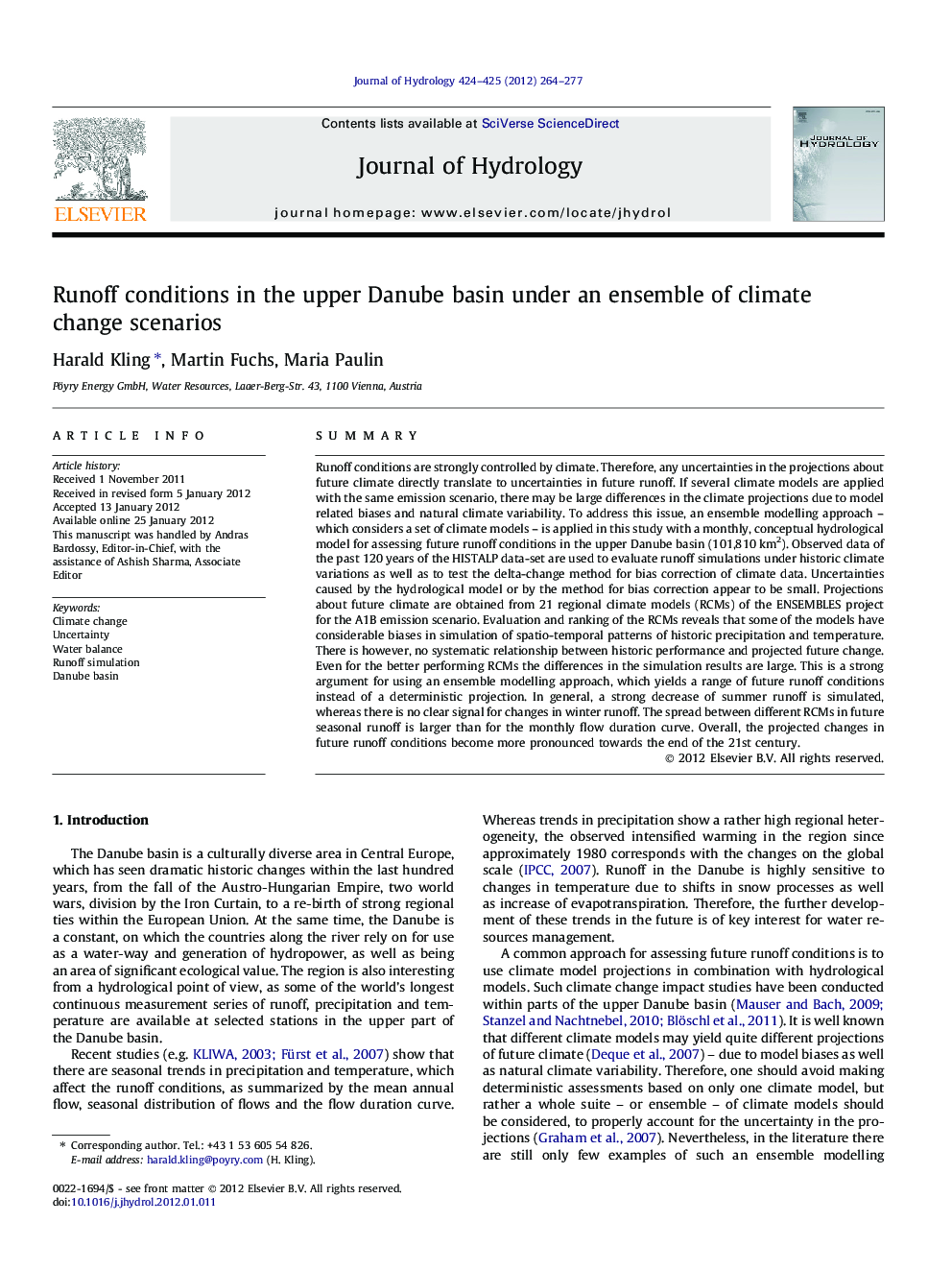| کد مقاله | کد نشریه | سال انتشار | مقاله انگلیسی | نسخه تمام متن |
|---|---|---|---|---|
| 4577114 | 1629999 | 2012 | 14 صفحه PDF | دانلود رایگان |

SummaryRunoff conditions are strongly controlled by climate. Therefore, any uncertainties in the projections about future climate directly translate to uncertainties in future runoff. If several climate models are applied with the same emission scenario, there may be large differences in the climate projections due to model related biases and natural climate variability. To address this issue, an ensemble modelling approach – which considers a set of climate models – is applied in this study with a monthly, conceptual hydrological model for assessing future runoff conditions in the upper Danube basin (101,810 km2). Observed data of the past 120 years of the HISTALP data-set are used to evaluate runoff simulations under historic climate variations as well as to test the delta-change method for bias correction of climate data. Uncertainties caused by the hydrological model or by the method for bias correction appear to be small. Projections about future climate are obtained from 21 regional climate models (RCMs) of the ENSEMBLES project for the A1B emission scenario. Evaluation and ranking of the RCMs reveals that some of the models have considerable biases in simulation of spatio-temporal patterns of historic precipitation and temperature. There is however, no systematic relationship between historic performance and projected future change. Even for the better performing RCMs the differences in the simulation results are large. This is a strong argument for using an ensemble modelling approach, which yields a range of future runoff conditions instead of a deterministic projection. In general, a strong decrease of summer runoff is simulated, whereas there is no clear signal for changes in winter runoff. The spread between different RCMs in future seasonal runoff is larger than for the monthly flow duration curve. Overall, the projected changes in future runoff conditions become more pronounced towards the end of the 21st century.
Figure optionsDownload as PowerPoint slideHighlights
► Evaluation of hydrological runoff simulations with 120 years of historic data.
► Usage of a large ensemble of regional climate models to address uncertainty in climate projections.
► Assessment of range in future runoff conditions until the end of the 21st century.
Journal: Journal of Hydrology - Volumes 424–425, 6 March 2012, Pages 264–277